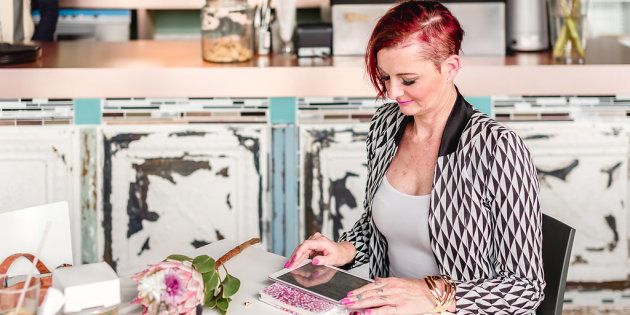
If I had a penny for every time I've heard someone say "I'm not creative", I'd have a shoe collection that would make Imelda Marcos positively green.
What is creativity exactly? Everyone has their own idea or definition, but the one that I think is most accurate comes from the folks at California State University: Creativityis definedas the tendency to generate or recognize ideas, alternatives, or possibilities that may be useful in solving problems, communicating with others, and entertaining ourselves and others.
Ever had an idea? Boom! Guess what, you're creative.
Creativity is not limited to being able to draw or design cool things. If you can look at a problem and come up with an idea to solve it, that's being creative.
Now that we've got that misconception out of the way, doesn't it seem silly that our offices and work days aren't purpose built to encourage creativity? How are we supposed to come up with awesome ideas if we don't give our brains the space – both physical and mental – to think?
The road to convincing certain industries that spending time being creative is important, is a long one. We place high value in people who are doers, who fill their hours will tasks completed. The people who come up with wonderfully innovative and ground breaking ideas live in the creative department (said in the required awe-filled tone) where regular mortals aren't welcome.
That's a load of codswallop. Everyone can and should be allowed to dip into the creative parts of their brain and here are 5 tips on how to create that time and space for yourself.
1. Ask to work from home
I have a friend who is a copywriter and he is endlessly frustrated with his low productivity and the quality of his work because he simply can't concentrate with office noise going on around him.
Working from home doesn't work for everyone and it also doesn't work for every occupation, but if the right boundaries are set, it can be an effective way to find a creative sweet-spot.
If your boss is worried about whether you'll actually be working, agree on what deliverables he/she is expecting to see come out of this time away and be conscientious about reporting back to them as soon as you're back in the office. It takes time to build the trust that is required to be allowed to work from home on a regular basis.
2. Work in a coffee shop
While some people need silence to think, others thrive in a busier environment or a mix of the two depending on the task. My friend Claire Stier who runs a gift experience business, choses a public space has her creative zone.
"I prefer a coffee shop or somewhere with a great view and a buzz to get creative in. A place with a sort of 'white noise' lack of distraction.
3. Set aside a 'creative task' day or hour
Anyone who emails me on a Monday or Tuesday gets the following out-of-office response:
Thanks for your email. Please note that I set aside Mondays and Tuesdays as my creative time. They are the days I spend playing with ideas, strategizing and creating cool stuff!
I will check my emails at midday and 4 pm for anything that requires urgent attention.
Not everyone can set aside whole days, but I think it's just as effective to do so for a few hours a week. I find that formalising these creative hours is beneficial in several ways:
- It creates a clear boundary around this time and subtly communicates that you don't want to be disturbed.
- It manages expectations because people know that you won't be available for that time slot and they won't be wondering why you aren't responding.
- It gets you into the habit of effectively using that time for your creative tasks. I find that certain routines help my brain shift into a creative thinking mode and I know the same is true for many great thinkers, artists, writers and innovators.
- It gives other people permission to set aside creative time too! Let's face it, some folk are going to think you're being all precious about this "creative time" thing. I can almost guarantee you they are dying to do the same but they're just too afraid to do it first.
4. Go for a walk
Leave your phone and earphones behind and simply go for a walk. The rhythm of walking and breathing will get your body into a calm state and your mind will begin to wander. Give it free reign. You'll be surprised at what is hiding in the recesses of your mind if you give it some room to come out to play.
5. Carry a lot of Post-its
If you can't set aside dedicated creative time, then at least carry a stack of post-its. When an idea strikes, write it down and pop it on a post-it wall in your office. Take it a step further: leave post-it's around the office and encourage your team to share their ideas on your post-it wall.
Making time to be creative at work can be a difficult task, but I encourage you to stick with it. Like any habit, it takes some time to get into, but once it becomes a regular part of your day you'll wonder how you ever managed without it.
